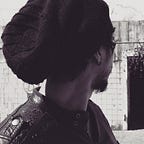The Seven Key Steps of Story Structure, John Truby, The Anatomy of Story
“The Godfather” is a long, complex novel and film. “Tootsie” is a highly choreographed whirl of unrequited love, mistaken identity and farcical missteps. “Chinatown” s a tricky unfolding of surprises and revelations. These very different stories are all succesful because of the unbreakable oranic chain of seven key structure steps under each story’s surface.
When we talk about the structure of a story, we talk about how a story develops over time. For example, all living things appear to grow in one continuous flow, but if we look closely, we can see certain steps, or stages, in that growth. The same is true of a story.
A story has a minimum of seven steps in its growth from beginning to end:
Weakness and need
Desire
Opponent
Plan
Battle
Self-revelation
New equilibrium
The Seven steps are not arbitrarily imposed from without, the way a mechanical story structure such as three-act structure is. They exist in the story. These seven steps are the nucleus, the DNA, of your story and the foundation of your success as a storyteller because they are based on human action. They are the steps that any human being must work through to solve a life problem. And because the seven steps are organic — implied in your premise line — they must be linked properly for the story to have the greatest impact on the audience.
Let’s look at what each of these steps means, how they are linked one to another below the surface, and how they actually work in stories.
